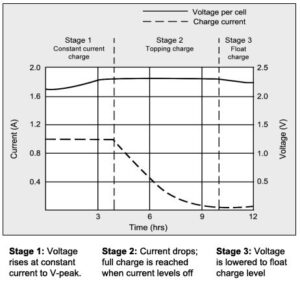Need help claiming the EV charger tax credit? You’ve come to the right place! If you’re an electric vehicle owner looking to benefit from the tax incentives available, we’ve got you covered. In this article, we’ll guide you through the process step-by-step, ensuring you understand how to claim the EV charger tax credit and maximize your savings. So, let’s get started and unravel the details of this valuable opportunity. By the end, you’ll be equipped with all the knowledge you need to successfully claim the EV charger tax credit. Let’s dive in!
How to Claim EV Charger Tax Credit: A Comprehensive Guide
As electric vehicles (EVs) continue to gain popularity, the demand for electric vehicle charging infrastructure is also on the rise. To encourage the adoption of electric vehicles and facilitate the development of charging stations, the government offers various incentives, including tax credits. In this comprehensive guide, we will explore the process of claiming the EV charger tax credit, providing you with all the necessary information to take advantage of this financial benefit.
Understanding the EV Charger Tax Credit
The EV charger tax credit, also known as the Electric Vehicle Charging Station Credit, is a financial incentive provided by the government to individuals or businesses that install electric vehicle charging stations. This credit aims to promote the expansion of EV charging infrastructure and make electric vehicle ownership more convenient for consumers.
Under the current federal tax code, taxpayers who install eligible charging stations can claim a credit of up to 30% of the installation costs, with a maximum credit of $30,000 per location. The credit applies to both residential and commercial installations, making it a valuable opportunity for individuals, businesses, and organizations of all sizes.
Determining Eligibility for the EV Charger Tax Credit
Before diving into the process of claiming the EV charger tax credit, it is crucial to ensure that you meet the eligibility criteria. Here are the key factors to consider:
- The charging station must be installed in the tax year for which you are claiming the credit.
- The charging station must be for personal or business use, not for investing or resale purposes.
- The charging station must be operational and available for use.
- The installation must comply with all applicable electrical codes and standards.
- The charging station must have at least 220 volts of power capacity.
- The credit only applies to the installation costs, not the equipment itself.
It is essential to consult a tax professional or refer to the official IRS guidelines to ensure full compliance and eligibility before proceeding with the claim.
Step-by-Step Guide to Claiming the EV Charger Tax Credit
Now that you understand the basics of the EV charger tax credit and have determined your eligibility, let’s explore the step-by-step process of claiming the credit:
Step 1: Gather Required Documentation
Before filing your taxes, it is crucial to gather all the necessary documentation to support your claim. Make sure to collect the following documents:
- Proof of purchase and installation costs, including invoices and receipts.
- Manufacturer certifications confirming that the charging station meets the required standards.
- Documentation showcasing compliance with local electrical codes and regulations.
Having these documents readily available will make the claiming process smoother and help substantiate your claim in case of an audit.
Step 2: Prepare your Tax Return
As you prepare your tax return, you will need to complete the appropriate forms to claim the EV charger tax credit. Depending on your filing status and business structure, these forms may vary. The most common form used for claiming the credit is the IRS Form 8911, which is specifically designed for this purpose.
Consult a tax professional or refer to the official IRS instructions to ensure accurate completion of the required forms. Pay close attention to any specific guidelines or documentation requirements mentioned in the instructions.
Step 3: Calculate and Claim the Credit
Once you have the necessary forms filled out, it’s time to calculate and claim the EV charger tax credit. The credit amount can be up to 30% of the eligible installation costs, with a maximum credit of $30,000 per location.
Double-check all the figures before filing your tax return to ensure accuracy. Mistakes or miscalculations can lead to delays in processing your claim or potential issues in case of an audit.
Step 4: File your Tax Return
After completing the necessary forms and calculations, you are ready to file your tax return. Ensure that you follow the current IRS guidelines for filing procedures, whether you are filing electronically or by mail.
Keep a copy of your tax return and all supporting documents for your records. This will be useful in case of any future inquiries or audits.
State and Local Incentives
In addition to the federal EV charger tax credit, it is essential to explore state and local incentives that may further enhance the financial benefits of installing electric vehicle charging stations. Many states offer their own tax credits, grants, or rebates to encourage the installation of EV charging infrastructure.
Research the incentives specific to your state and locality to maximize your savings and leverage all available opportunities. Websites such as the Department of Energy’s Alternative Fuels Data Center can provide detailed information on local incentives and opportunities.
Installing electric vehicle charging stations not only contributes to the growth of sustainable transportation but also presents an opportunity to benefit from the EV charger tax credit. By following the steps outlined in this comprehensive guide, you can ensure a seamless process of claiming the tax credit and enjoy the financial incentives provided by the government.
Remember to consult a tax professional, stay informed about any changes in tax regulations, and always refer to official IRS guidelines and instructions. Claiming the EV charger tax credit can help offset the installation costs and accelerate the adoption of electric vehicles, contributing to a cleaner and greener future for all.
Frequently Asked Questions
How do I claim the EV charger tax credit?
To claim the EV charger tax credit, you will need to follow these steps:
What is the eligibility criteria for claiming the EV charger tax credit?
To be eligible for the EV charger tax credit, you need to meet the following criteria:
– You must be the owner of the charging equipment.
– The equipment must be installed at a property you own and use for personal purposes.
– The installation of the charging equipment must have been completed in the tax year you are claiming the credit for.
– The charging equipment must meet specific technical requirements and be listed as eligible by the Internal Revenue Service (IRS).
How much is the EV charger tax credit?
The EV charger tax credit allows for a credit of up to 30% of the cost of purchasing and installing eligible charging equipment. The maximum credit amount is $1,000 for residential installations.
Are there any limitations or restrictions on the EV charger tax credit?
Yes, there are some limitations and restrictions on the EV charger tax credit. Here are a few important points to note:
– The credit applies only to the cost of the charging equipment and its installation, not to any other related costs.
– The credit can only be claimed once for each individual charging station.
– The credit can be used to offset your federal tax liability but cannot be claimed as a refund if it exceeds your tax liability.
What documentation do I need to claim the EV charger tax credit?
To claim the EV charger tax credit, you will need to keep the following documentation:
– Proof of purchase and installation costs for the charging equipment, such as receipts or invoices.
– Documentation confirming that the charging equipment meets the technical requirements set by the IRS.
– Any other supporting documentation that may be requested by the IRS during the tax filing process.
Can I claim the EV charger tax credit for a charging station installed at a rental property?
No, you cannot claim the EV charger tax credit for a charging station installed at a rental property. The credit is only available for charging equipment installed at a property owned and used for personal purposes. Rental properties are not eligible for this tax credit.
Final Thoughts
To claim the EV charger tax credit, follow these simple steps:
First, ensure that you qualify for the tax credit by owning or installing a qualified electric vehicle charging station. This could be for personal use or for commercial purposes.
Next, gather all the necessary documentation, such as the receipts and proof of purchase for the electric vehicle charging station. These documents will be required when filing your tax return.
When it’s time to file your tax return, use Form 8911 to claim the EV charger tax credit. This form will allow you to calculate the eligible amount and apply for the credit.
Remember to accurately fill out the form and attach all the required documents to support your claim. Double-check for any errors or missing information before submitting your tax return.
In conclusion, to claim the EV charger tax credit, make sure you qualify, gather the necessary documents, and use Form 8911 during tax filing. By following these steps, you can take advantage of the financial benefits available for installing an electric vehicle charging station.




